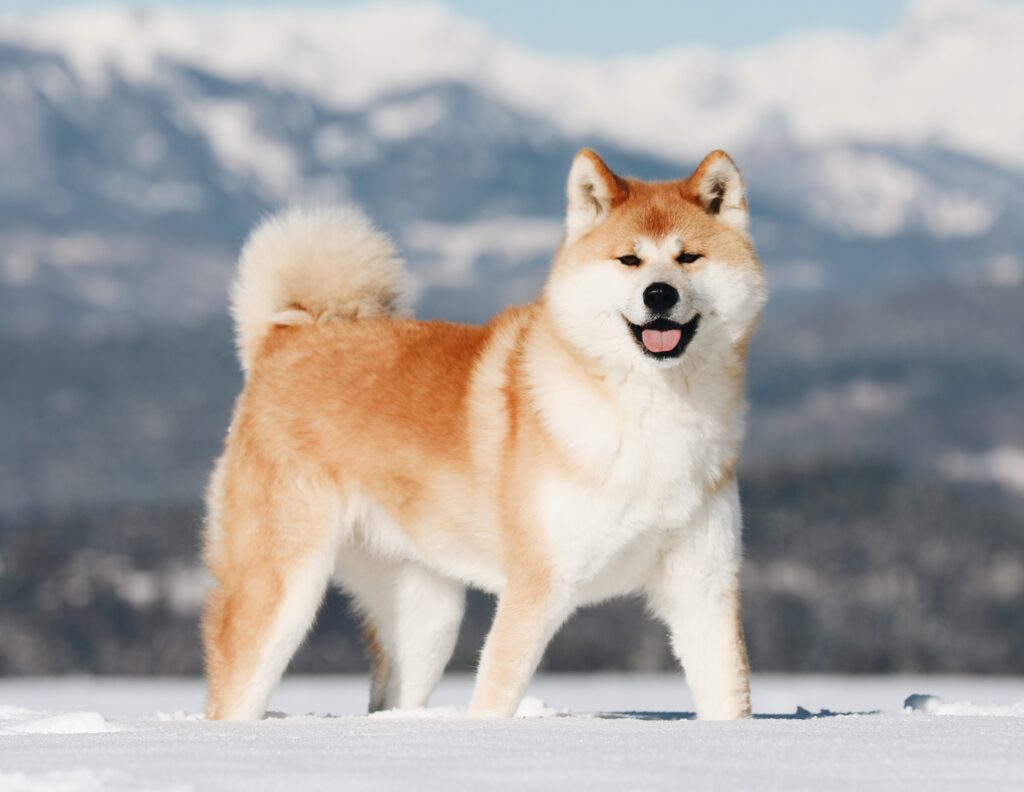The Japanese Akita Inu is the original and pure strain of Akita, originating in Japan where it was used for centuries as a courageous bear hunting dog.
It is a striking-looking dog; solid and sturdy, with a bear-like head with erect, triangular ears and small, dark deep-set eyes. They have a plumed tail that curls over their back, and an extremely dense double coat which is either brindle, red fawn, sesame or white. This breed is very loyal and protective to its owners, although generally aloof with strangers. They prefer quieter households, and may not do well as family dogs, although will fair better with older, more sensible children. Having been bred to work alone, the Japanese Akita Inu is also happier as an only dog and can be intolerant and aggressive to other dogs, as well as territorial of its home. This breed requires plenty of exercise and regular obedience training, and its strength should not be underestimated. This attractive dog is not suitable for everyone and is better suited to experienced owners.

History
The Japanese Akita Inu originates from the snowy mountains of northern Japan and is founded on spitz type dogs which found their way to this region centuries ago. They were trained to hunt animals such as elk, brown bears and wild boars, and this tough and courageous dog also served as a guard dog and companion for the imperial leaders of Japan. Today, the Japanese Akita Inu is used as a police dog in Japan, where is also known as a symbol of protection, and more recently it was declared as one of Japan’s national treasures. The Akita and the Japanese Akita Inu have been classed as two separate breeds.





